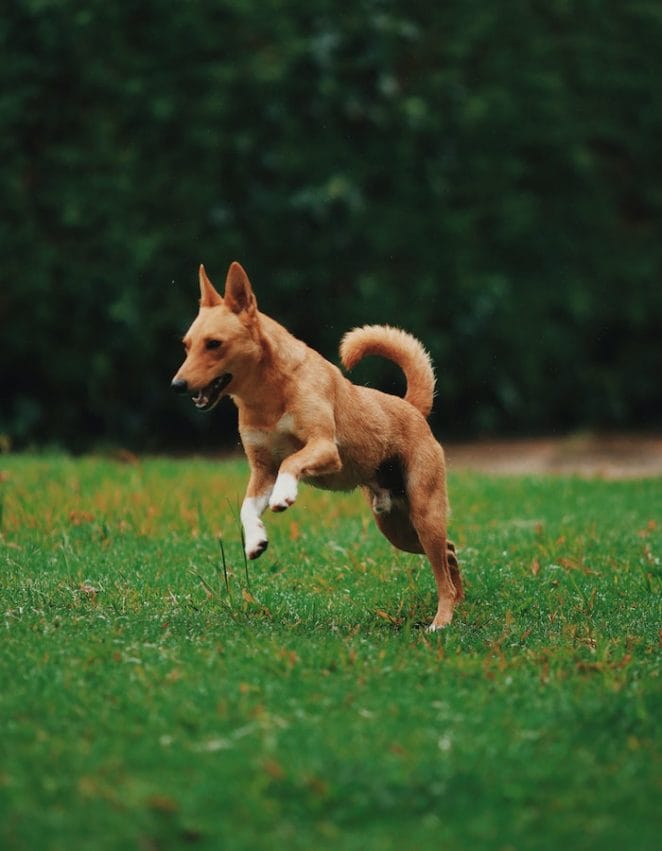
Do dogs sweat? This is a question that has puzzled pet owners for years.
Do dogs need to cool down the way humans do by sweating through their skin? Or do they rely on panting and other methods of evaporative cooling?
The answer may surprise you!
In this blog post, we will explore the topic of canine perspiration and find out what really happens when your dog starts to overheat.
Do dogs’ bodies sweat?
The answer is yes – but not in the same way as humans.
Dogs sweat in a different way to humans – they have sweat glands all over their skin, but these are mostly located on their paw pads and nose.
When your dog pants, he is actually cooling himself down by evaporation. The moisture on his tongue and in his lungs evaporates, which has a cooling effect on his body.
This is an efficient way for dogs to regulate their body temperature, and it means that they don’t need to rely on sweating as much as humans do.
However, it’s important to remember that panting is a normal part of a dog’s physiology, and it doesn’t always mean that he is overheated.
If your dog is panting excessively or seems to be struggling to breathe, then it’s time to seek veterinary attention.

How do dogs sweat?
Dogs have two types of sweat glands – eccrine and apocrine.
Eccrine sweat
Eccrine sweat glands are located all over the body, including on the paw pads. They produce a clear, odorless sweat that helps to regulate body temperature.
This type of sweat is produced by the eccrine glands, which are located in the dermis layer of the skin.
Apocrine sweat
Apocrine sweat glands are located in the hair follicles, and they produce a thicker, oily substance that contains proteins and lipids.
This type of sweat is what gives dogs their distinctive smell!
Apocrine sweat is also thought to play a role in social communication, as it can convey information about the dog’s emotional state.
What are the advantages and disadvantages of sweating?
Advantages of dogs sweating
Sweating has a number of benefits for dogs, including:
- It helps to regulate body temperature
- It helps to cool down the dog
- It helps to circulate air around the body
- It helps to remove toxins from the body
Disadvantages of dogs sweating
There are a few disadvantages of sweating, including:
- It can lead to dehydration if the dog is not drinking enough water
- It can cause skin irritation
- It can attract dirt and dust
Do all dogs sweat?
Dogs sweat in order to regulate their body temperature, and not all dogs sweat in the same way.
Smaller dogs and breeds with short coats are more likely to pant than sweat when they get hot.
This is because they have a smaller surface area from which to lose heat, and their coats don’t provide much insulation.
Larger dogs and breeds with thick coats are more likely to sweat when they overheat, as they have a larger surface area and their coats provide more insulation.
Dogs typically start to pant when their body temperature rises above 100 degrees Fahrenheit, and they will start to sweat when it rises above 107 degrees.
However, different dogs have different tolerances for heat, so it’s important to know your dog’s limits. If your dog is panting heavily or showing other signs of distress, it’s time to cool them down.
How do dogs cool down?

There are two ways how dogs cool down themselves:
Dogs cool down by panting and by evaporative cooling.
Panting is an efficient way for dogs to regulate their body temperature. The moisture on their tongue and in their lungs evaporates, which has a cooling effect on their bodies.
Panting also helps to circulate air around the body, which further aids in cooling.
Evaporative cooling
Evaporative cooling is the process of converting liquid into a gas.
When dogs pant, the moisture on their tongue and in their lungs evaporates, which has a cooling effect on their bodies.
This type of cooling is more efficient than sweating, as it doesn’t require the body to produce extra heat.
How can I tell if my dog is overheating?
There are a few signs that you can look out for to tell if your dog is overheating, including:
- Excessive panting
- Drooling
- Increased heart rate
- Muscle weakness
- Confusion
If you notice any of these signs, it’s important to take action immediately. Move your dog to a cool, shady spot and give him some water to drink.
If he doesn’t improve, then seek veterinary attention as soon as possible.
Overheating can be dangerous for dogs, so it’s important to be aware of the signs and take action if your dog is starting to overheat.
Final words
Sweating is an important process that helps to regulate body temperature. Do dogs sweat? Yes, they do! But not all dogs sweat in the same way.
Smaller breeds and those with short coats are more likely to pant than sweat when they get hot. Larger breeds and those with thick coats are more likely to sweat when they overheat.
If you notice your dog panting heavily or showing other signs of distress, it’s time to cool them down.


GIPHY App Key not set. Please check settings